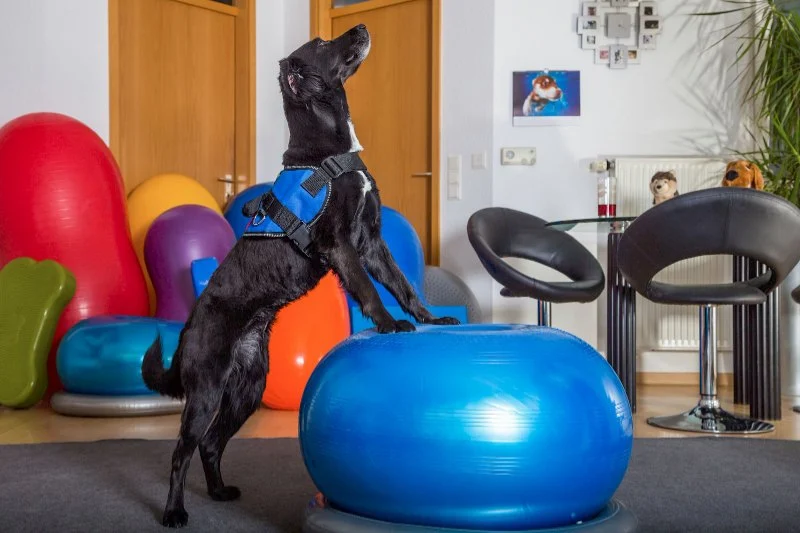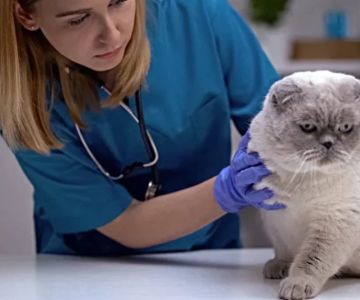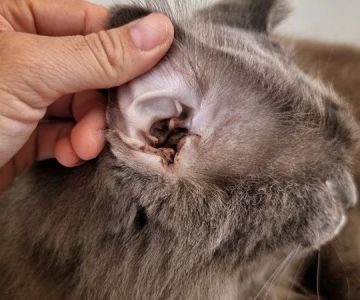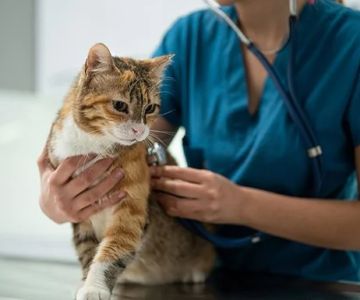
- 1-Understanding Pet Physical Therapy and Rehab
- 2-Common Signs Your Pet Needs Physical Therapy
- 3-Conditions That Benefit from Pet Rehabilitation
- 4-Benefits of Pet Physical Therapy
- 5-How to Choose the Right Physical Therapy for Your Pet
- 6-How Pet & Puppy Can Help
1. Understanding Pet Physical Therapy and Rehab
Pet physical therapy, also known as rehabilitation, involves treatments and exercises designed to help pets recover from injuries, surgeries, or age-related conditions. It can be highly beneficial for pets that are struggling with mobility issues, muscle weakness, or pain. The goal of physical therapy is to improve a pet’s strength, flexibility, and overall quality of life.
Pet rehabilitation is similar to physical therapy in humans. It helps pets regain their physical function through guided exercises, manual therapy, and other techniques. By working with a certified veterinary physical therapist, you can ensure that your pet receives personalized care suited to their specific condition.
2. Common Signs Your Pet Needs Physical Therapy
Recognizing when your pet may need physical therapy or rehab is the first step in helping them recover. Some common signs that indicate your pet might benefit from physical therapy include:
2.1 Difficulty Moving or Limping
If your pet has trouble walking, running, or climbing stairs, it may be suffering from muscle weakness or joint issues. Limping or stiffness in one or more legs can be a sign of arthritis, injury, or a post-surgery complication. Physical therapy can help improve your pet’s mobility and decrease discomfort.
2.2 Post-Surgery Recovery
After surgery, pets often need physical therapy to regain strength and heal properly. For example, pets recovering from joint surgery, such as hip replacement or ligament repair, may benefit greatly from a tailored rehabilitation program to speed up recovery and restore full function.
2.3 Pain or Discomfort
If your pet is showing signs of pain, such as whining, reluctance to move, or changes in behavior, it might be time for physical therapy. Therapy can help reduce pain, improve circulation, and reduce inflammation, which is particularly helpful for pets with chronic conditions like arthritis.
2.4 Limited Range of Motion
Pets that have a limited range of motion, especially after an injury, surgery, or aging, can greatly benefit from physical therapy. If your pet has difficulty bending, stretching, or turning, physical therapy exercises can help restore their full range of motion.
3. Conditions That Benefit from Pet Rehabilitation
Many conditions can benefit from pet rehabilitation, especially those that affect the musculoskeletal or nervous systems. Some of the most common conditions include:
3.1 Osteoarthritis
Osteoarthritis is common in older dogs and can significantly affect their mobility and quality of life. Physical therapy helps by strengthening muscles, improving joint function, and reducing pain and stiffness.
3.2 Post-Surgery Recovery
After surgery, rehabilitation can play a key role in helping pets recover quickly and safely. Whether it’s recovering from orthopedic surgery or soft tissue repair, physical therapy helps pets regain strength and mobility.
3.3 Neurological Conditions
Pets with neurological conditions such as intervertebral disc disease (IVDD) or spinal cord injury may benefit from rehabilitation to regain movement and strength. Therapy can improve balance, coordination, and overall neurological function.
3.4 Muscle Weakness and Atrophy
Muscle weakness or atrophy can occur after injury, surgery, or extended periods of immobility. Physical therapy helps rebuild muscle strength and prevent further muscle loss, restoring your pet’s ability to walk and run.
4. Benefits of Pet Physical Therapy
Physical therapy offers numerous benefits for pets that need rehabilitation, including:
4.1 Improved Mobility
One of the main benefits of physical therapy is the improvement in your pet’s mobility. Therapy helps your pet regain strength, flexibility, and coordination, making it easier for them to walk, climb stairs, and play.
4.2 Pain Relief
Pet physical therapy techniques, such as massage and heat treatments, can provide pain relief by reducing inflammation and promoting circulation. This helps manage chronic pain, especially in pets with arthritis or injuries.
4.3 Faster Recovery
Rehabilitation can help pets recover faster after surgery or injury. It accelerates the healing process by promoting blood flow and reducing stiffness. This allows pets to regain full function more quickly.
4.4 Prevention of Further Injury
Physical therapy not only helps with recovery but also helps prevent further injury by strengthening muscles and improving flexibility. By addressing muscle imbalances or joint problems, therapy can reduce the risk of recurring injuries.
5. How to Choose the Right Physical Therapy for Your Pet
When considering physical therapy for your pet, it’s important to work with a qualified veterinary professional. Here are a few tips for choosing the right therapy:
5.1 Consult with Your Veterinarian
Your veterinarian will be able to evaluate your pet’s condition and recommend an appropriate rehabilitation program. They may refer you to a certified veterinary physical therapist for personalized care.
5.2 Look for Specialized Rehabilitation Centers
Choose a rehabilitation center that specializes in treating animals. Look for facilities with certified veterinary rehabilitation professionals who are experienced in treating pets with similar conditions.
5.3 Tailored Treatment Plans
Every pet is different, so it’s important that their rehabilitation program is tailored to their specific needs. Ensure that the therapy plan includes exercises and treatments designed to address your pet’s unique condition.
6. How Pet & Puppy Can Help
At Pet & Puppy, we offer a variety of products and resources to support your pet’s physical therapy and rehabilitation journey. From orthopedic beds to therapeutic toys, we have everything you need to help your pet recover comfortably and effectively.
Visit Pet & Puppy today to explore our selection of pet care products and speak with our team about how we can assist with your pet’s recovery.









 Pet Life Veterinary Clinic4.0 (159 reviews)
Pet Life Veterinary Clinic4.0 (159 reviews) VIP Petcare Vaccination Clinic5.0 (1 reviews)
VIP Petcare Vaccination Clinic5.0 (1 reviews) Buckner Animal Clinic4.0 (142 reviews)
Buckner Animal Clinic4.0 (142 reviews) Oldham County Veterinary Services, LLC4.0 (209 reviews)
Oldham County Veterinary Services, LLC4.0 (209 reviews) Feathered Frenzy Aviary3.0 (11 reviews)
Feathered Frenzy Aviary3.0 (11 reviews) Pet Doctor of Chandler4.0 (798 reviews)
Pet Doctor of Chandler4.0 (798 reviews) Pet Vaccination Schedule: Essential Shots Your Pet Needs to Stay Healthy
Pet Vaccination Schedule: Essential Shots Your Pet Needs to Stay Healthy Heatstroke Prevention: How to Keep Pets Cool in Summer
Heatstroke Prevention: How to Keep Pets Cool in Summer Leash Pulling in Dogs: Causes & Effective Correction Techniques
Leash Pulling in Dogs: Causes & Effective Correction Techniques How to Build Confidence in a Shy Pet: Effective Tips and Techniques
How to Build Confidence in a Shy Pet: Effective Tips and Techniques The Role of Probiotics in Pet Health: Should You Supplement?
The Role of Probiotics in Pet Health: Should You Supplement? How to Recognize Lice or Mites in Pets: A Guide for Pet Owners
How to Recognize Lice or Mites in Pets: A Guide for Pet Owners